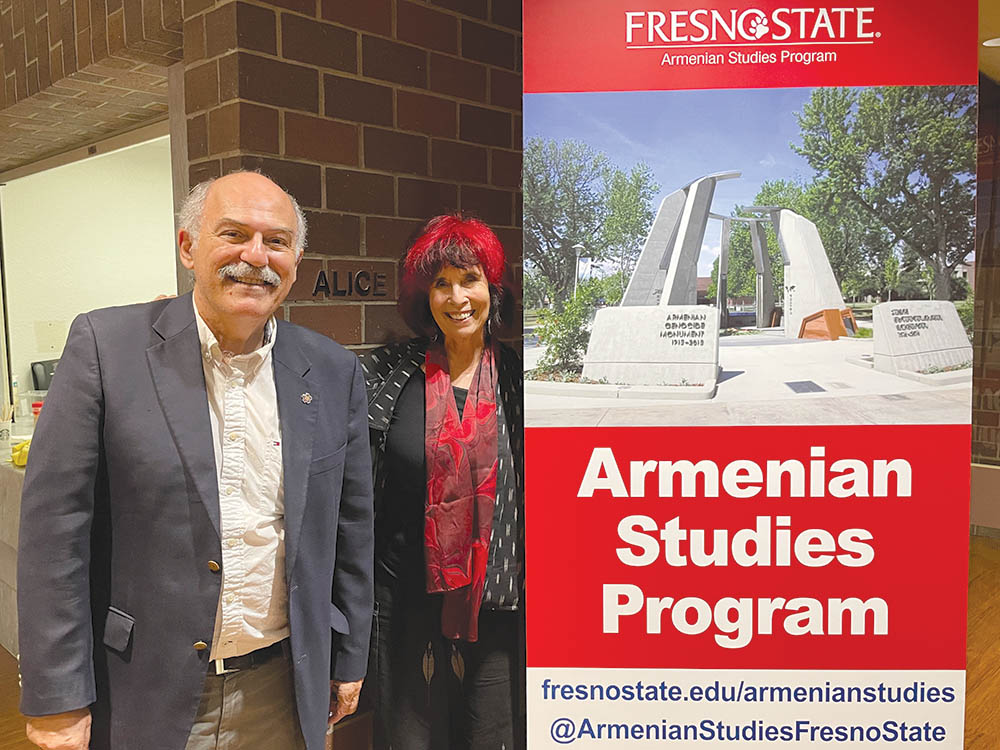
Photo: Andrew Hagopian
Hannah Paloutzian
Staff Writer
“Immediately following the Genocide, Armenians did not want to return to Armenia, as it represented death and loss. As generations continued, Armenians wanted to return to their ancestral homeland” stated Dr. Carel Bertram as she discussed her new book, A House in the Homeland: Armenian Pilgrimages to Places of Ancestral Memory.
Dr. Carel Bertram is Professor Emerita in Middle East and Islamic Studies in the Department of Humanities at California State University, San Francisco. She earned her M.A. from UC Berkeley, and her Ph.D. in Islamic Art History from UCLA. Although Dr. Bertram is not Armenian, she gained knowledge about the Armenian Genocide through her study of Turkish houses, and how they became memories during the dissolution of the Ottoman Empire.
On Thursday, October 20, 2022, the Armenian Studies Program invited Dr. Bertram to present a talk on her new book. Dr. Bertram’s purpose in writing this book was to discuss how the pilgrimages to Armenia began, what the pilgrims who went felt, their spiritual dimensions, and some rituals the pilgrims performed.
Dr. Bertram began her presentation by showing a historical map of Western Armenia. She described the different villages and pointed out how many of the people she traveled with had grandparents from these very areas that now are part of Turkey. Dr. Bertram described these historical areas of Western Armenia as a “Genocide Map.”
Dr. Bertram then discussed how the organized trips to Turkey began. She emphasized that the trips she and the groups she went with were not just tourist trips, but pilgrimages. They began when Armen Aroyan, who had an urge to visit his grandfather’s homeland, began to organize small tours to Turkey. Dr. Bertram mentioned how more and more Armenians began to join these pilgrimages to historic Armenia in order to heal tears in their heart left from the Genocide. Upon arriving in historical Western Armenia, now Turkey, Dr. Bertram noted how the local people in the areas had little or no knowledge when it came to the history of the Armenian Genocide. She also noted that on the bus rides to their ancestral homelands, the pilgrims would share similar stories regarding their families who lived in these villages.
The second theme of Dr. Bertram’s book, and a point she discussed during the presentation, were the rituals that the pilgrims performed in their ancestral homeland. Dr. Bertram mentioned how many of these pilgrims brought photos of their family members to the locations where they experienced the genocide, and left the photos there to honor their family members’ memory.
A specific example she gave was the ritual Lynn Derderian performed in Diyarbakir (Dikranagerd). Derderian hid her family photo in Sourp Giragos Armenian Church, and read every single family member’s name aloud from her family tree.
She stated that she did not want to bring her family members “home” to the trauma they experienced during the Genocide. Another type of ritual was collecting dirt from family members’ homelands take it home to lay on their family members’ graves.
To wrap up her presentation, Dr. Bertram stated that “there is no healing or repair of genocide,” and concluded with a poem from Gregory Djanikian.
 Hye Sharzhoom Armenian Action
Hye Sharzhoom Armenian Action